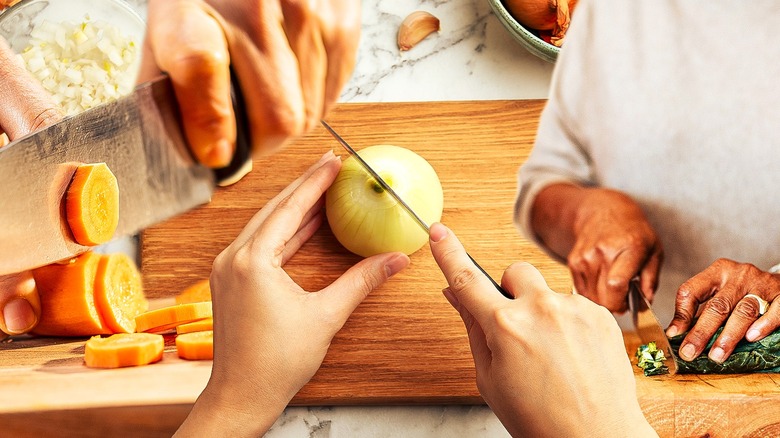If you're wondering how to season cutting board, you're in the right place. A well-seasoned cutting board not only enhances the beauty of the wood but also extends its lifespan. As a kitchen professional, understanding the best practices for maintaining your cutting board's integrity is essential to your craft.
Seasoning a cutting board correctly can make a significant difference in how it performs over time. It helps prevent cracking, warping, and absorbing food odors, thereby keeping your food preparation safe and hygienic. Heres a deep dive into the perfect ways to keep your cutting board in tip-top condition.

Understanding the Importance of Seasoning
Before we delve into the specifics of how to season cutting board, its vital to understand why seasoning is necessary. Seasoning involves applying oil to your wooden board to replenish its moisture. This protects the board from drying out, which can lead to cracking and other damage.
Without proper seasoning, a wooden cutting board can absorb moisture and odors over time, which can compromise your food's flavor and safety. For kitchen professionals, this is non-negotiable a cutting board that isn't properly maintained can detract from the quality of your food preparations.
Choosing the Right Oil for Seasoning
When it comes to how to season cutting board, selecting the right oil is crucial. Avoid using vegetable oils or olive oil as they can become rancid over time; instead, consider the following options:
- Mineral Oil: This is a popular choice. Its food-safe and wont go rancid. Its also relatively inexpensive and readily available.
- Beeswax: This natural wax creates a protective seal. Combine it with mineral oil for a reevaluated finish.
- Coconut Oil: Some professionals prefer coconut oil for its pleasant aroma and durability.
Steps to Season Your Cutting Board
Now that you know the importance of seasoning and selecting the right oil, let's explore the steps to properly season your cutting board.
Step 1: Cleaning the Board
Before applying oil, ensure your board is clean. Follow these tips:
- Wash it with mild soap and warm water.
- Use a scrub brush or sponge to remove any debris or food particles.
- Rinse thoroughly and dry with a clean towel.
Step 2: Applying the Oil
Once your board is clean and dried, its time to apply the oil:
- Pour a small amount of your chosen oil onto the board.
- Using a clean cloth or paper towel, rub the oil into the wood in the direction of the grain.
- Continue applying the oil until the wood can no longer absorb any more.
Step 3: Letting It Soak
After coating the surface, allow it to soak in for a few hours or overnight if possible. This means considering the board's particular needs and letting it absorb the oil adequately.
Step 4: Wiping off the Excess
After letting it soak, wipe off any excess oil using a clean cloth. This step prevents a sticky surface and ensures your cutting board feels smooth and ready for use.
Regular Maintenance for Longevity
To make the most of your seasoned cutting board, establish a regular maintenance routine:
- Oil the board every month or as needed, depending on how often its used.
- Incorporate cleaning and sanitization into your routine when preparing different foods.
- Store your cutting board in a dry, well-ventilated space to avoid mildew.
Common Mistakes to Avoid
When seasoning your cutting board, here are some common pitfalls to steer clear of:
- Over-using the oil can lead to a sticky finish.
- Neglecting regular maintenance can lead to irreversible damage.
- Choosing the wrong type of oil can cause more harm than good.
Safety Considerations
Safety is paramount, especially in professional kitchens. Consider the following:
- Regularly sanitize your board using a bleach solution or food-safe cleaner.
- Be aware of cross-contamination by using separate boards for meat and vegetables.
- Educate yourself and your team about the proper care of cutting boards to ensure safe food preparation practices.

Conclusion
Understanding how to season cutting board is vital for any kitchen professional seeking to maintain a high standard of safety and hygiene in food preparation. With the proper oil and a simple maintenance routine, your cutting board can last for years while remaining safe to use and pleasant to look at.
For more tips on cleaning wooden surfaces, check out this article on cleaning wood boards or see how to oil your cutting board.
Don't forget to take a look at cutting board safety tips as well to keep your kitchen practices in check.
As an Amazon Associate, I earn from qualifying purchases.


























